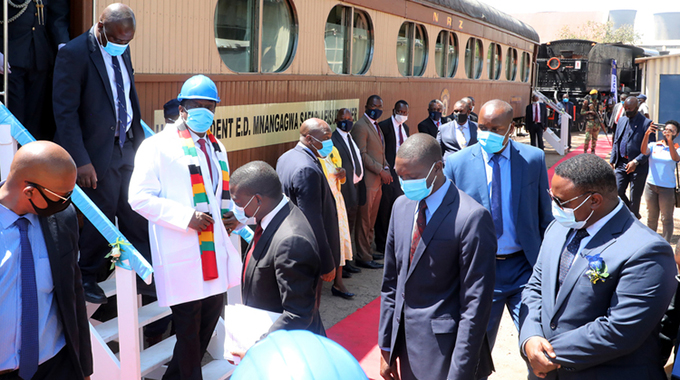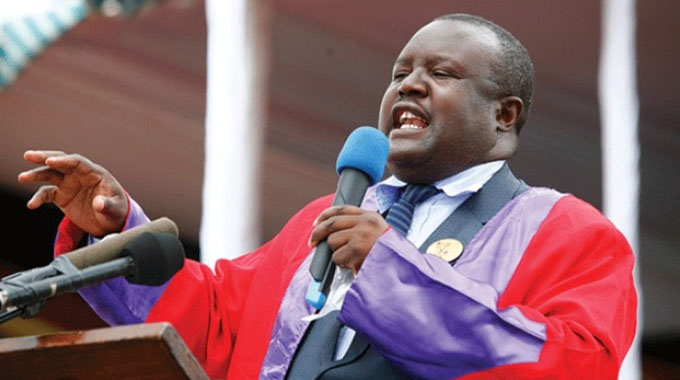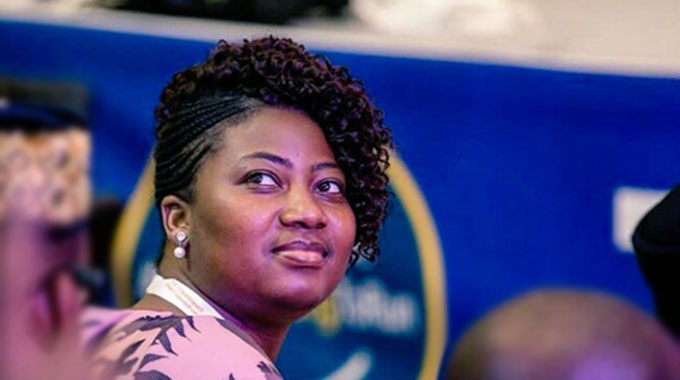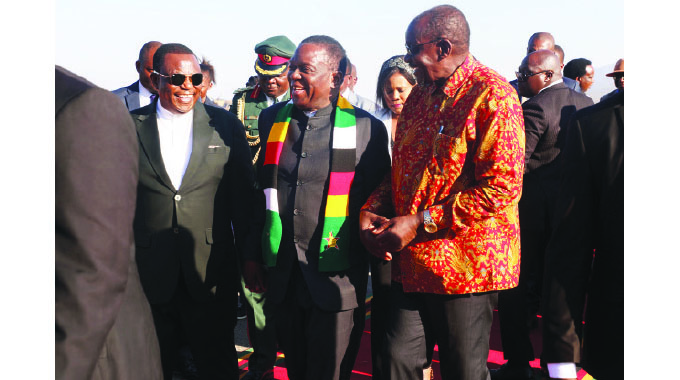‘Zim expects good relations with UK’

Oliver Kazunga
Senior Reporter
The National Railways of Zimbabwe Museum in Bulawayo is now a national tourism development site with one of its more enthusiastic visitors being President Mnangagwa who yesterday spent some hours touring exhibits. He noted that Zimbabwe was preserving rather than hiding its colonial past and so there should be much better relations with the British.
The President was especially keen on checking out the personal railway coach used by Cecil John Rhodes — a luxury piece of rolling stock which eventually carried his body to the Matopos, the coach assigned to King George VI on his one visit with his family — including Princess Elizabeth, the current British Queen — and a replica of the engine the President blew up as a young fighter in the liberation war.
The President’s visit saw him officially launching the NRZ Museum as a National Tourism Development Site.
Before touring the museum, President Mnangagwa was given a briefing, which meeting was attended by the NRZ museum curator Mr Gordon Murray, Bulawayo Provincial Affairs and Devolution Minister Judith Ncube, Environment, Tourism and Hospitality Industry Minister Mangaliso Ndlovu, Transport and Infrastructural Development Minister Joe Biggie Matiza, National Museums and Monuments of Zimbabwe executive director Dr Godfrey Mahachi, and the NRZ board and management.
After the briefing, the President examined the personal coach of chief colonialist Cecil John Rhodes, which carried his remains from South Africa to Bulawayo for burial in the Matopo Hills following his death in 1902.
After the tour, the President in his address to the gathering that comprised senior Government officials and NRZ workers, among others said: “The actual issue why I needed to come here, I wanted to understand the spirit, the environment that existed in 1893-96 when Rhodes was commuting between Cape Town and Southern Rhodesia and the coach he was using, the facilities he had created for himself and some of his colleagues, the four musketeers, he used to move around with.”
President Mnangagwa said the other reason for his visit to the museum was to see the coach that was used by King George VI.
Said the President: “The other issue is that I was also told that there was a coach here at the Bulawayo Railway Museum which was dedicated to King George VI from the United Kingdom, the father to the current Queen. The coach is here, but they put sanctions on us. So, I have seen the coach which King George VI used to come here and use together with his family including Queen Elizabeth. The pictures are here, the utensils they used for dinner, lunch and for breakfast all these things are here.”
He said Zimbabwe has looked after all of the above things for nearly 100 years or thereabout and thus one would expect that there should be “excellent” relations between Zimbabwe and the erstwhile colonisers.
“That history is preserved and one would expect that there should be excellent relations between us and those who came after King George VI.”
The President commended Minister Matiza, Adv Dinha and Mr Murray for keeping a replica of a locomotive that he blew up during the liberation struggle.
“I have also seen, and this is a plus to Minister Matiza, Dinha and of course the curator here, a replica of the locomotive which me and my colleague blew up. The picture is here and a replica has been assembled here; that I didn’t know.
“What I cannot say which is in my mind, is that we have certain things, which I wanted to do. But I will only do them after I have discovered what happened during that time. So every aspect of history must be in its correct place,” he said, amid thunderous applause from the floor.
Although the museum was only established in 1972, railways enthusiasts have managed to track down, rescue, have assigned, and at times restored, a wide range of exhibits, with the oldest dating back to 1897.
With an impressive collection of steam locomotives, from the turn of the 20th century right through to the great Beyer-Peacock-Garratt articulated locomotives that dominated the latter half of the steam era, the museum gives enthusiasts and tourists a detailed view of how the railways developed over the years.
The Bulawayo Railway Museum, which is located at the NRZ Railway Station in the city, houses exhibitions on the history of the railway system in Zimbabwe, formerly Rhodesia.
The facility houses, among others, the first steam locomotive to arrive in the country in 1899.
Owing to Mr Murray’s rich experience in the railway system, he has co-authored two books on the history of the railways in Zimbabwe.
The first book titled, “Our Railway Heritage” focuses on the history of the exhibits at the Bulawayo Railway Museum.
The publication contains vital information relating to the different historical locomotives at the museum and the mileage travelled, including coaches and other relics of the NRZ.
Mr Murray’s second book, “Iron Spine and Ribs” which he co-authored with Rob Burrett and Robin Taylor aptly captures the history of the foundation of the railways of Zimbabwe, Zambia and Botswana.
The book was published in 2015.
His narrative captures the very first moment when the first steam locomotive known as Jack Tar arrived in the country in 1899. The locomotive was built by Manning, Wardle and Company of England in 1896.
Jack Tar, including the second oldest locomotive, The Lawley, a narrow-gauge engine built in 1897, are kept at the museum.
Mutare was the country’s first railway headquarters before it moved to Bulawayo in 1910.
President Mnangagwa underscored the need to redefine Zimbabwe’s history so that factual information is bestowed upon the present generation.
Said the President: “I will elaborate on another day where I will implement what I have in mind because from what I’ve seen today, a few things which the current generation know are not correct,” said the President.
“I believe that I need another occasion when actually I’ll be ready to unfold and unpack what is necessary to be done so that generations to come will access correct history about the past and about our country and about our heroes and heroines who are gone before us.”









Comments